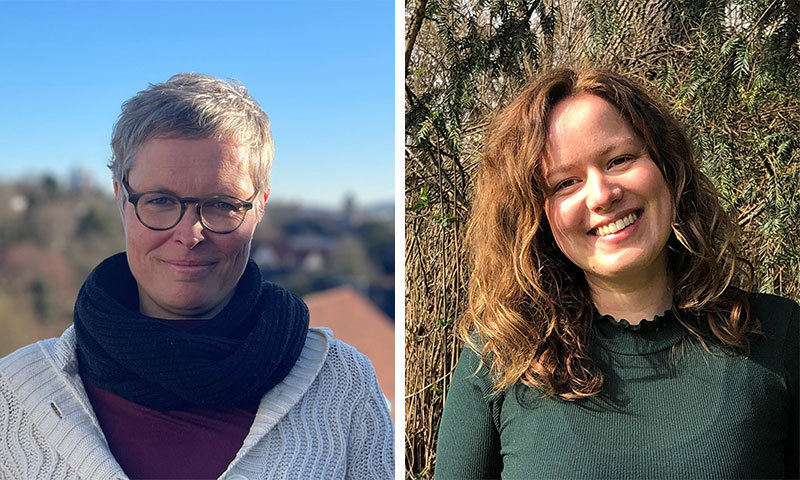News
Memories of Something That Never Happened
[15.04.2021]Some people remember things that never actually happened. FernUni professor Aileen Oeberst is the lead author of a study about correcting these false memories.
 Photo: Marco Bottigelli/Moment/Getty Images
Photo: Marco Bottigelli/Moment/Getty Images
Many people know scenes like this from television: A patient lies on a couch. The psychiatrist asks him questions, digging around in his subconscious. Suddenly, she triggers something in him. The patient is overwhelmed by images that he had long since repressed. Such fictions are hard to reconcile with the actual state of knowledge in psychology.
It has long been known that human memory works differently. Memories are neither recorded in our minds to be played back when needed, nor are they like unchangeable records hidden away in a drawer of our unconscious mind. Rather, memories are situated reconstructions, which can even be fed by external sources. Some childhood memories are entirely made up of vivid stories told by our parents, for example. In this way, false memories can also slip into our minds unnoticed.
“This is extremely relevant for psychological practice,” explained Prof. Dr. Aileen Oeberst of the FernUniversität in Hagen. The professor, who holds the Chair of Media Psychology, recently published a study on the topic. Her co-authors were her research associate Merle Wachendörfer, Prof. Dr. Roland Imhoff (Mainz) and Dr. Hartmut Blank (Portsmouth, UK). Additionally, several students contributed to the study.
Implanting False Memories...
“Our question was whether it is also possible to reverse false memories,” Prof. Oeberst explained. “And whether it can be done in a way that can actually be implemented in practice.” In order to investigate this, they first needed to create false memories.
Under a pretext, the research team interviewed 52 adult study participants at regular intervals over a set time period. By means of suggestion – for example, repeatedly asking specific questions – they were able to evoke false childhood memories in over half of the participants within two weeks. These were negative but not traumatic memories. For example, the research team made some participants believe that they got lost during a vacation or were attacked by a dog as a child. The participants’ parents helped to make the invented stories plausible by providing the researchers with context information. For the sake of comparing the results, they also described events that their children actually experienced.
 Photo: JCB DMMLR / private photograph
Photo: JCB DMMLR / private photograph
... and Removing Them Again
In the second part of the study, researchers tested whether they could correct the error in participants’ memories. The results are reassuring: False memories can be corrected.
After another set of interviews, the majority of the participants in the study were able to recognize their often very detailed imagined memories as false. Merle Wachendörfer explained how: “The first measure was source monitoring. We asked participants to think again about whether they themselves were really the source of their memories – or if they might actually come from a photo or a story told by their relatives.”
The second measure was aimed at further sensitizing participants, Wachendörfer said: “We explained what we know about false memories from research, and that repeatedly calling up childhood memories can sometimes lead to remembering something that never actually happened.” Afterwards, the participants were asked to go through their memories again and to report whether any of their memories happened to seem false. The majority came forward.
The team did not leave anyone under a false impression: “Of course we explained to everyone what the study was about at the end,” Oeberst assured.
Risks for Psychological Practice
The study lays important foundations for further research. Gaining more knowledge, raising awareness, and sensitizing people is extremely important, in the opinion of the FernUni psychologists, because memory’s susceptibility to suggestive influence harbors substantial risks – for example if statements made in legal contexts are based on false memories.
But this also holds true in classic therapy situations: If therapists are convinced of a particular theory, they may accidentally implant memories that fit the theory in their patients. “Over half of the participants in our study developed false memories in only two weeks. What, then, can suggestive therapy that goes on for months and years do to someone?” Oeberst said with concern. “When people only start to believe after years of therapy that this or that happened to them in their childhood, you have to say: it is not improbable that these are false memories.”

